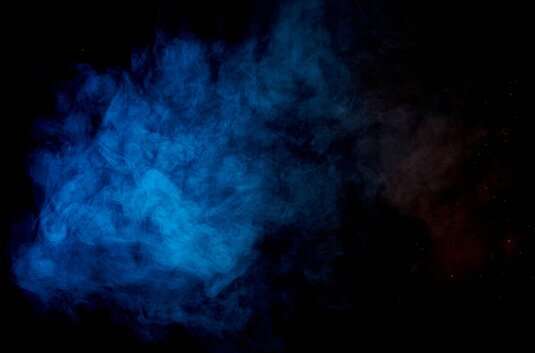Creating a non-toxic alternative to colored smoke

Colored smoke is increasingly employed as an element of spectacle in a broad spectrum of public events. However, the chemicals used for this purpose give rise to toxic by-products. LMU chemists have now developed a safe alternative.
Colored smoke is an indispensable ingredient of day-time fireworks displays, is used to create atmospheric lighting effects in advertising and at fashion shows, and finds application in a growing range of public events. In addition, smoke signals have long been used as a means of communication in military contexts. However, the generation of conventional smoke signals results in the release of toxic by-products. As a result, they can present a public health risk—particularly in the hands of inexperienced users—apart from contaminating the environment. Minimizing damage to the environment has therefore become a significant design criterion for manufacturers of this form of pyrotechnics. Chemists led by LMU's Professor Thomas M. Klapötke now report, for the first time the successful use of a non-toxic substance for the generation of colored smoke. The study appears in the international journal Angewandte Chemie.
"Owing to the increasing use of smoke effects in diverse contexts, it is now more important than ever to ensure that smoke bombs can be safely deployed, and that health risks are minimized," says Klapötke.
With the support of the US Department of Defense's Strategic Environmental Research and Development Program (SERDP), and in cooperation with the Czech firm EXPLOSIA, his research group set out to find non-toxic alternatives to the ingredients that have hitherto been used in smoke bombs. The reaction between the basic component of the conventional formulation (potassium chlorate) and the organic substances that provide the colors gives rise to polychlorinated compounds that are carcinogenic.
Furthermore, mixtures based on hexachloroethane are often used to generate white smoke—and their combustion leads to the formation of toxic by-products such as hexachlorobenzene, hexachlorobutadiene, chlorinated dibenzofurans and dibenzodioxins. In the new formulation developed by Klapötke and his colleagues, potassium chlorate is replaced by the non-toxic nitrogen-rich salt guanidinium-5,5'-azotetrazolate, which is combined with several organic dyes as coloring agents.
"Our halogen-free mixture solves the environmental problem and, like a chameleon, it's able to produce a wide range of colors—white, red, violet, yellow, green and blue," Klapötke says.
More information: Thomas M. Klapötke. Guanidinium 5,5'‐azotetrazolate: a colorful chameleon for halogen‐free smoke signals, Angewandte Chemie International Edition (2020).
Journal information: Angewandte Chemie , Angewandte Chemie International Edition
Provided by Ludwig Maximilian University of Munich




















